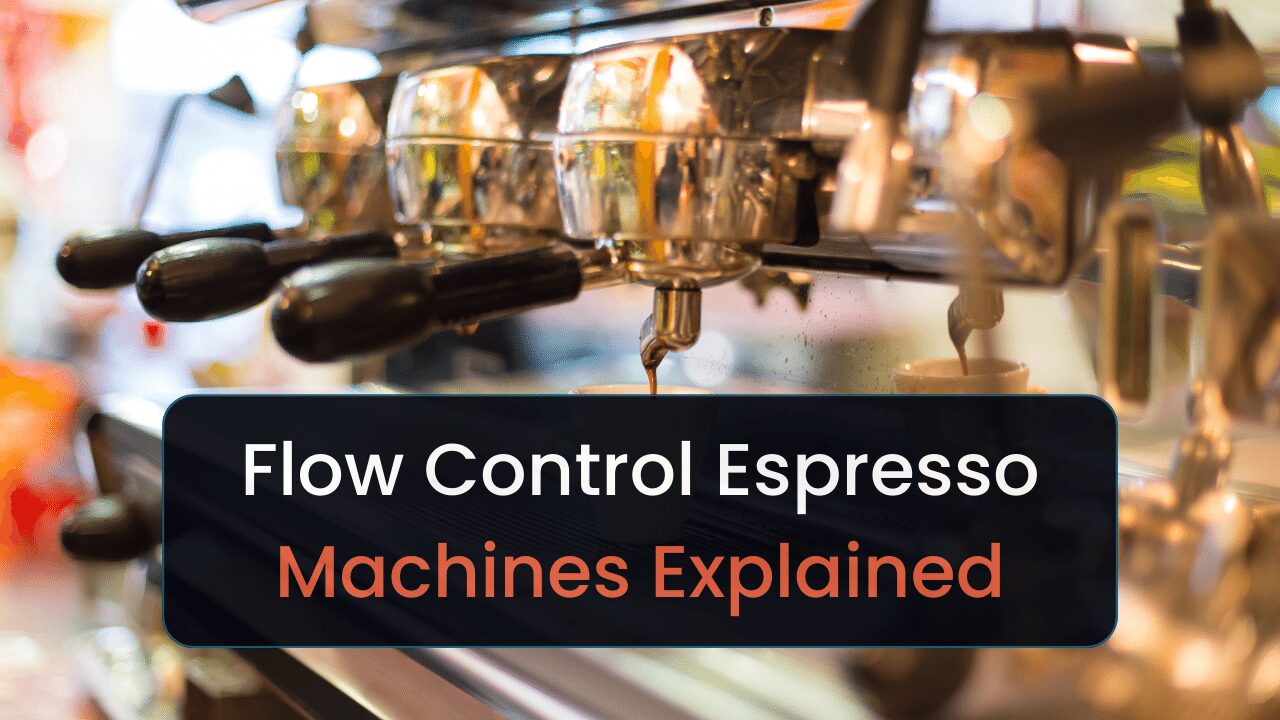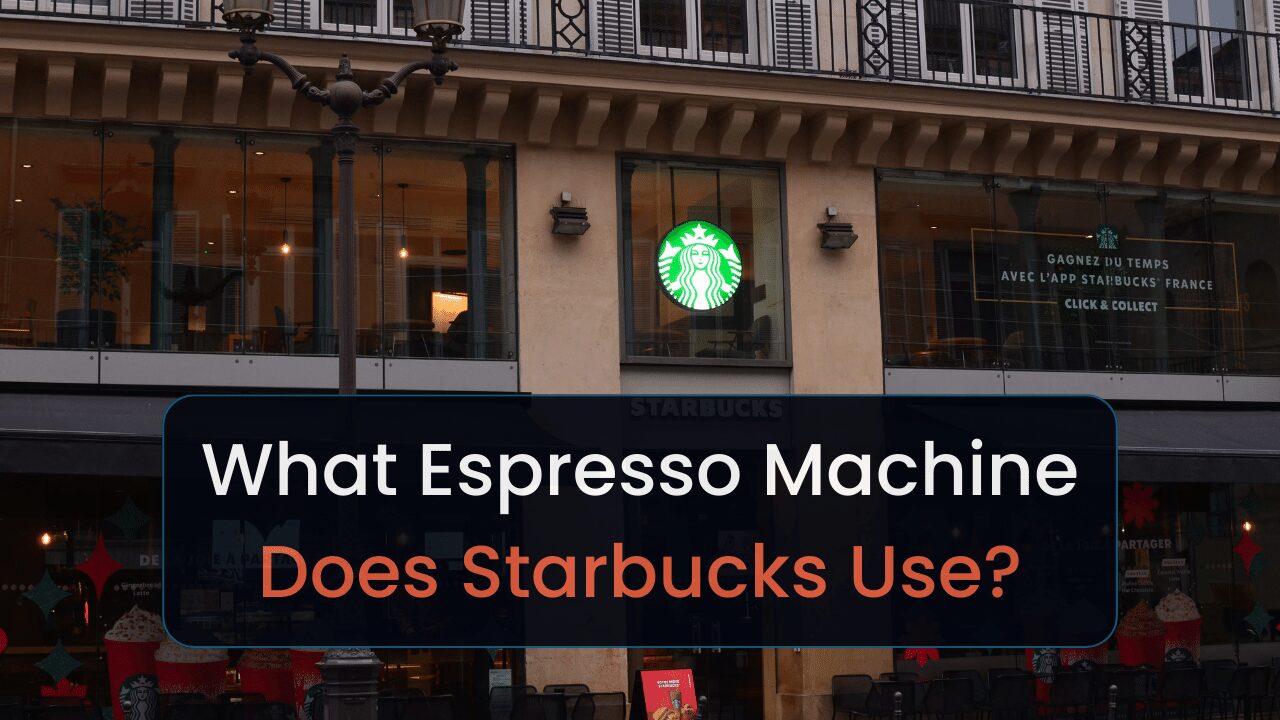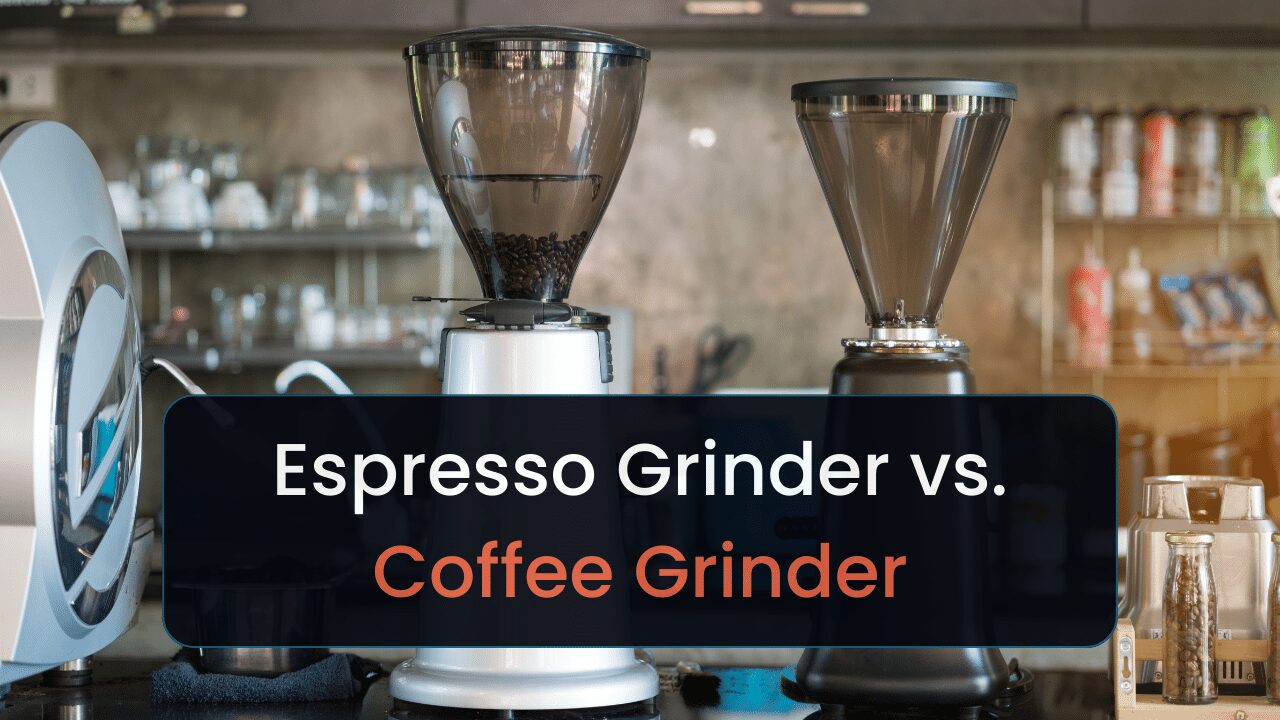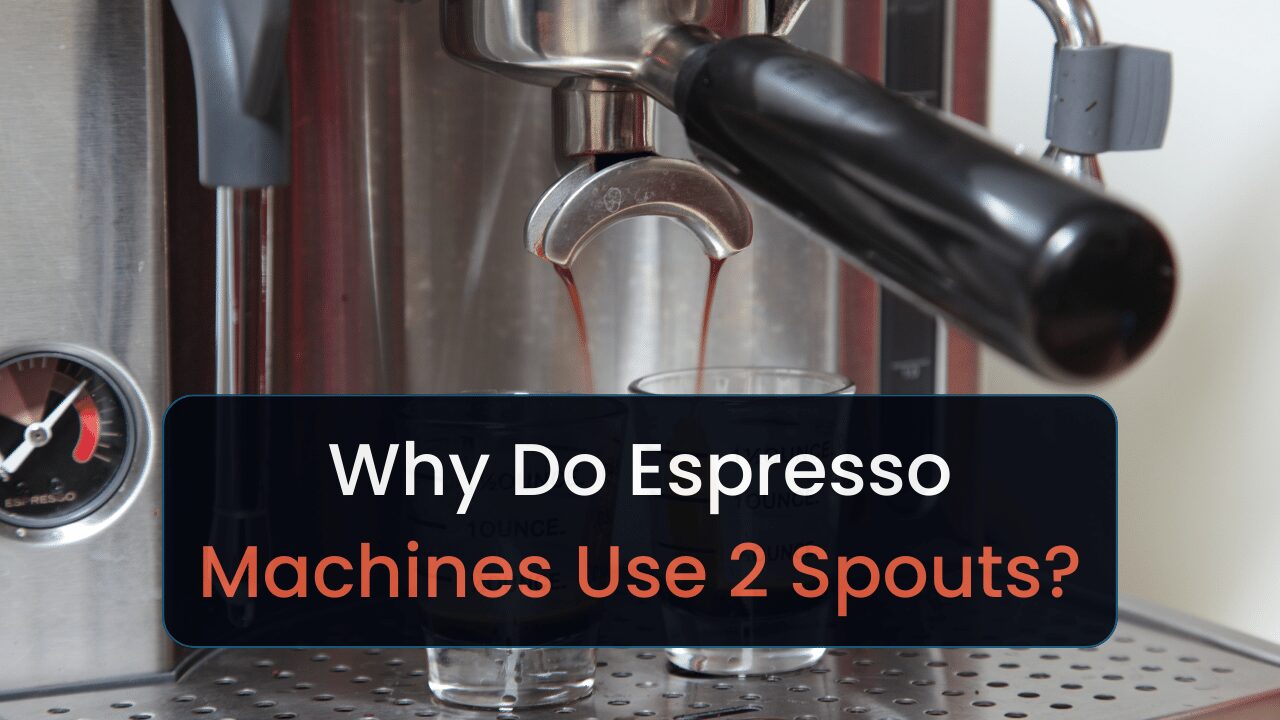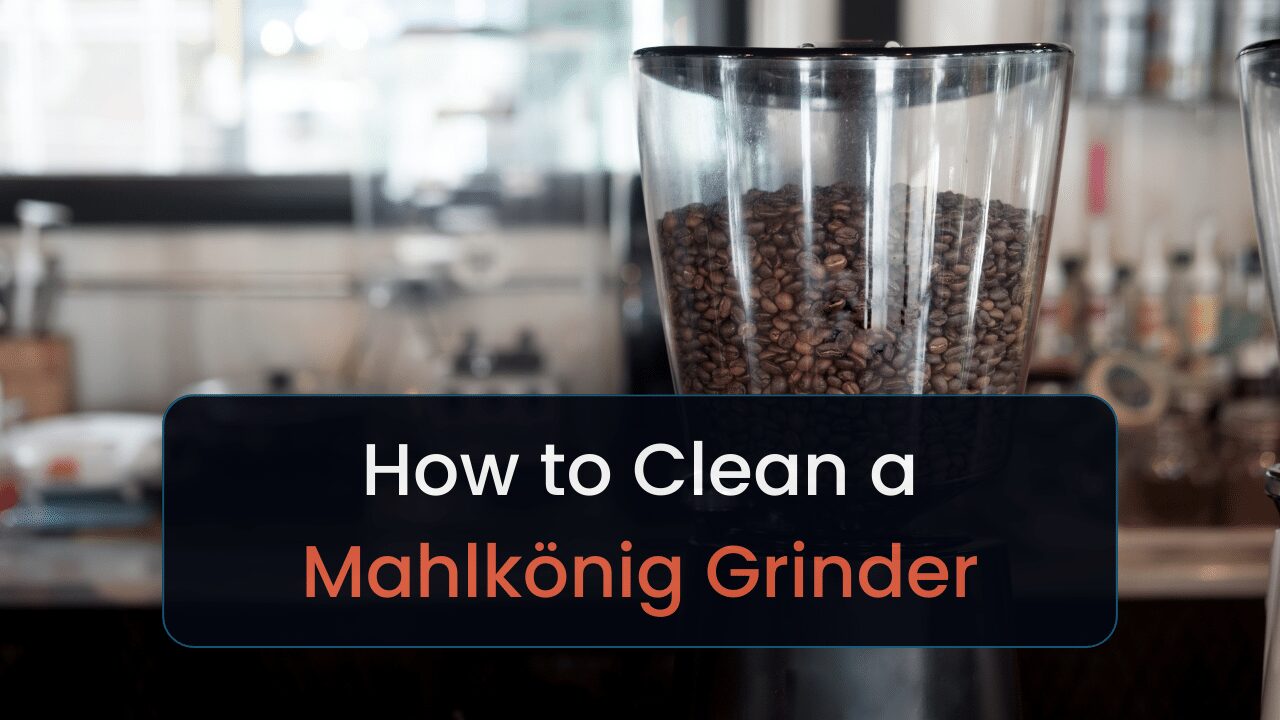This is our review of the best dual boiler espresso machines. Read on to learn more.
I don’t like waiting forever for my espresso machine to heat. That’s why I compiled a list of some of the best dual boiler espresso makers.
My number 1 pick was the ECM Synchronika. I chose this guy because it’ll last forever (partially due to the E61 group head) and connects directly to your plumbing. A fantastic addition for homes who don’t want to waste time maintaining their machine.
But it’s pricey. Not to worry, I provide an enormous list of more affordable alternatives.
Let’s go.
Top 7 Dual Boiler Espresso Machines for Home
- ECM Synchronika: Best Overall
- Profitec Pro 700: Best Performer
- Gevi Espresso Machine With Grinder: Least Expensive
- LELIT Elizabeth: Best Machine Under ~$1,000
- Rancilio Silvia Pro X: Best Small Machine
- Rocket Espresso R58: Best Prosumer Machine
- Breville Dual Boiler: Best Machine UK
7 Best Dual Boiler Espresso Machines
Dual boilers are a type of heating system in espresso machines that allow them to brew drinks quicker. And it’ll allow you to steam milk while brewing espresso simultaneously. It’s a fantastic choice for anyone wanting to make drinks quicker.
They tend to tack at least an additional couple hundred dollars to a machine’s cost, though. Considering, they’re a “premium” feature.
Other heating types exist like:
- Single boiler
- Thermojet
- Thermocoil
- Thermoblock
But I won’t cover these.
Here’s a legend to clear up any potential misunderstandings:
- Dimensions:
- D: depth
- W: width
- H: height
- PID = proportional integral derivative: monitors water temperature & makes minor adjustments to keep it to a set temperature.
- ESE = Easy Serve Espresso: pods with pre-ground beans to make brewing drinks easier.
The following sections will cover each machine’s specs, pros and cons, who they’re best for, and other relevant information. Afterward, I’ll present a buying guide. This may clear up additional questions you’ll have when reading.
You can find all our dual boiler espresso machines here if you’re looking for commercial models.
1. ECM Synchronika: Best Overall
![7 Best Dual Boiler Espresso Machines in [currentyear] 1 ecm synchronika dual boiler espresso machine](https://timscoffee.com/wp-content/uploads/2023/06/ecm-synchronika-dual-boiler-espresso-machine.png)
| Price | $$$ |
| Type | Semi-automatic |
| Dimensions | 18.7 × 13.2 × 16.53 in (D, W, H) |
| Bars of Pressure | 15 |
| Warranty | 3 years |
| Milk Frother | Yes |
| Water Capacity | 101 fl oz = 101 solo shots |
| Material | Stainless steel |
Pros
- Uses an E61 group head
- Could eliminate need to descale: read more to learn why
Cons
- E61 group heads take a while to warm up
- Steam power isn’t the greatest
The ECM Synchronika works best for anyone who wants a machine that’ll brew high-quality Americano, yet doesn’t require as much time in maintenance.
ECM is a semi-automatic machine that’s more difficult to use since it requires manual input in almost every step. Except with water pressure and temperature management. However, it’s ideal for beginners because it helps you grasp the basics of espresso making.
Including high-quality components like the E61 group head and the other pros I mentioned make this machine well worth its price.
What’s an E61 group head? It’s the highest quality group head that’s durable and known for even heat dispersion. Resulting in a near-perfect extraction every time. But it takes much longer to heat than saturated ones.
Not ideal for conserving time.
But this thing’s plumbing is god-tier. Firstly, you can connect it directly to your plumbing, removing the need to fill your water tank continually. Plus, you’ll always have fresh water. Not that stagnant junk that’s been sitting in the reservoir.
Then you could invest another few hundred dollars into a BWT water filter, which you’d connect to the ECM [1]. It softens water and eliminates mineral buildup. Eliminating the need to descale your machine every few months.
I recommend doing this if you spend thousands of dollars on an espresso machine. Having mineral buildup could negatively impact your machine’s lifespan and coffee’s taste.
Here’s a better performer.
2. Profitec Pro 300: Best Performer
![7 Best Dual Boiler Espresso Machines in [currentyear] 2 profitec pro 300 dual boiler espresso machine](https://timscoffee.com/wp-content/uploads/2023/05/profitec-pro-300-dual-boiler-espresso-machine.png)
| Price | $$$ |
| Type | Semi-automatic |
| Dimensions | 16.34 × 10.04 × 15.16 in (D, W, H) |
| Bars of Pressure | 15 |
| Warranty | 3 years |
| Milk Frother | Yes |
| Water Capacity | 101 fl oz = 101 solo shots |
| Material | Stainless steel |
Pros
- Can disable steam boiler
- Great for tight spaces (compact)
- Quiet vibration pump
Cons
- No pre-infusion
- Short steam wand
- Pressure gauge isn’t good for coffee
The Profitec Pro 300 is a fantastic choice for a great-performing espresso machine compact enough to fit on small coffee carts or countertops.
Another semi-automatic machine. It automates only water pressure and temperature to ensure consistent results when brewing drinks. Meanwhile, you retain the most control over espresso making. Ideal for all difficulty levels.
The biggest downside is the lack of pre-infusion, responsible for wetting beans for even extraction. A feature that would make drinks taste better. But considering it’s made of high-quality stainless steel components makes it worth the cost.
Because the longer the machine lasts, the less you’ll need to replace it.
The quieter vibration pump also makes this machine a great buy since you can make espresso early without waking up your family (or roommates). The ability to disable your steam wand.
Great for if you’re not making lattes and want to conserve energy. But when you do, the wand isn’t that long. Giving you less control over your microfoam’s texture, which could affect its flavor.
And the pressure gauge isn’t good for coffee because it only shows the steamer’s pressure.
Want to pay less? Here’s an option.
3. Gevi Espresso Machine With Grinder: Budget Friendly
![7 Best Dual Boiler Espresso Machines in [currentyear] 3 gevi espresso machine with grinder](https://timscoffee.com/wp-content/uploads/2023/06/gevi-espresso-machine-with-grinder.png)
| Price | $ |
| Type | Super-automatic |
| Dimensions | 12.2 × 10.4 × 13.5 in (D, W, H) |
| Bars of Pressure | 20 |
| Warranty | 1 year |
| Milk Frother | Yes |
| Water Capacity | 50 fl oz = 50 solo shots |
| Material | Stainless steel |
Pros
- Anti-static grinder
- UV blocking bean hopper
Cons
- Uses steel conical burrs
- Wand doesn’t froth well
The Gevi E020DE is a perfect addition to small offices, business waiting rooms, and homes that frequently entertain espresso-loving guests. That’s due to this machine’s ability to make many drinks back-to-back quickly.
This is a super-automatic machine, which means it’ll automate the entire espresso-making process. Requiring folks only to press a button and pour beans into the hopper.
Because of its automation and inclusion of a dual boiler, it has a great price point. But I wish it had a more extended warranty.
But they had to cut costs somewhere. They used steel conical burrs. These burrs last much longer than ceramic ones, due to remaining sharp longer. But they tend to heat up, leading to flavor loss in beans. And conical burrs don’t produce as consistent of grinds as flat ones.
More consistent grinds lead to better-tasting coffee due to having more even extraction.
The grinder has a couple of excellent quality-of-life features. The UV-blocking hopper case prevents sunlight from damaging your beans. And the anti-static properties prevent grinds from sticking to your machine. A common issue for low-priced grinders.
The steam wand is a bit difficult to use, requiring you to put more practice to produce decent-tasting cappuccinos.
And the machine goes up to 20 bars in pressure. That’s fantastic for anyone who loves bitter-tasting coffee. As the more bars used, the more bitter the taste.
Another affordable pick.
4. LELIT Elizabeth: Best Dual Boiler Espresso Machine Under ~$1,000
![7 Best Dual Boiler Espresso Machines in [currentyear] 4 lelit elizabeth](https://timscoffee.com/wp-content/uploads/2023/05/lelit-elizabeth.png)
| Price | $$ |
| Type | Semi-automatic |
| Dimensions | 11 × 12 × 15 in (D, W, H) |
| Bars of Pressure | 8–11 bars |
| Warranty | 3 years |
| Milk Frother | Yes |
| Water Capacity | 84 fl oz = 84 solo shots |
| Material | Stainless steel |
Pros
- Affordable
- Includes pre-infusion
Cons
- Can’t connect directly to plumbing
- Not the highest quality tubing
The LELIT Elizabeth is a fantastic addition to households that want a high-quality espresso machine without paying a fortune.
This type of machine only holds your hand when dealing with water pressure and temperature. That way, you don’t risk having inconsistent results in those areas. It’s easier to use than a manual machine, but more complicated than a super-automatic.
Despite including pre-infusion and a dual boiler, LELIT competitively priced their machine. Making it accessible to homes that want great-tasting coffee fast.
What is pre-infusion? It’s when the group head gradually applies pressure to the beans, wetting them before it fully extracts espresso. This allows you to extract the most flavors from your coffee beans.
However, it doesn’t include an E61 group head. A component known for providing consistent temperature and pressure. And notable for its long-lasting lifespan. Speaking of quality, the tubing isn’t the highest quality.
To save money, LELIT has to use Teflon tubing instead of stainless steel, which increases the risk for wear and tear. I believe this is a fair sacrifice to make the product more accessible.
I wish the machine could connect directly to plumbing. Then one could add a BWT filter and remove the need to descale. But that’s a pipe dream.
Then there’s the reserve mode. The machine will guarantee water availability for at least 60 seconds if your tank has no water. Great for you who forget to refill the reservoir, but need a quick drink when you’re in a rush.
Maybe you’re after a more compact espresso machine.
5. Rancilio Silvia Pro X: Best Small Dual Boiler Espresso Machine
![7 Best Dual Boiler Espresso Machines in [currentyear] 5 rancilio silvia pro](https://timscoffee.com/wp-content/uploads/2023/05/rancilio-silvia-pro-x.png)
| Price | $$$ |
| Type | Semi-automatic |
| Dimensions | 16.5 × 10 × 15.2 in (D, W, H) |
| Bars of Pressure | 15 |
| Warranty | 1 year |
| Milk Frother | Yes |
| Water Capacity | 33 fl oz = 33 solo shots |
| Material | Stainless steel |
Pros
- Easy to use
- Commercial-grade portafilter
- Excellent steam power
Cons
- Difficult to reach water reservoir
- Needs practice to perfect
The Rancilio Silvia Pro X is a perfect addition to homes that want a compact machine that’ll produce coffee-shop-grade beverages.
A semi-automatic machine requires manual input in every espresso-making step except water temperature and pressure regulation. You sacrifice a bit of control over your drink to increase the likelihood of consistent temperature and taste.
Despite the lack of pre-infusion, the Silvia Pro X is worth the cost, partially due to its commercial-grade portafilter. Meaning it’ll make plenty of high-quality drinks before requiring a replacement. Great for saving money.
It’ll take some effort to reach the water reservoir. It’s tucked on the back. Horrible for anyone who has it pressed against a wall and who needs to refill it. But you’ll likely find an easier way to fill it after a while.
It’s unfair to list “needs practice” as a con. Since it’s a semi-automatic machine. But I couldn’t think of any other notable downsides to this machine. I contradicted myself because I also said it’s easy to use.
That statement’s about the several buttons in front of the machine. They’re easy to read and understand, which will help alleviate the learning curve.
The steam power on the Silvia Pro X makes it an exceptional appliance for making lattes and cappuccinos, since it’ll help with temperature dispersion. Resulting in more even textures with milk foam.
Here’s a pick that’ll give you a feeling of working at a coffee shop.
6. Rocket Espresso R58: Best Prosumer Dual Boiler Espresso Machine
![7 Best Dual Boiler Espresso Machines in [currentyear] 6 rocket espresso r58](https://timscoffee.com/wp-content/uploads/2023/06/rocket-espresso-r58.png)
| Price | $$$ |
| Type | Semi-automatic |
| Dimensions | 22 × 17 × 17 in (D, W, H) |
| Bars of Pressure | 15 |
| Warranty | 3 years |
| Milk Frother | Yes |
| Water Capacity | 84 fl oz = 84 solo shots |
| Material | Stainless steel |
Pros
- Uses an E61 group head
- Quiet operation
- Can connect directly to plumbing
Cons
- No pre-infusion
- Takes a while to heat
- Can’t automatically turn off/on
The Rocket Espresso R58 is a no-brainer for anyone wanting a machine that’ll operate quietly and can connect directly to your home’s plumbing.
What does semi-automatic mean? You could tailor your drink to your preferences in every area except the temperature and pressure applied. It automates those areas to help ensure consistent results.
The high-quality parts included make this machine worth the money.
Having a reservoir and connecting it to plumbing makes the machine flexible. If you want to transport it to different rooms, the reservoir allows you to do so. To prevent yourself from having to refill the reservoir, and if you’re keeping it in 1 place, use the direct plumbing connection.
Also, get a BWT filter, and you’ll make it so you don’t have to descale your machine. A task you’d usually have to do every couple of months. But it doesn’t include pre-infusion. A feature that makes your coffee taste better.
And I’ve heard claims the machine will take 30 minutes to heat [2]. And once you’re done brewing, there’s no automatic turn-off. A smart plug could alleviate this con. Schedule a time to power off/on and it’ll do so.
Here’s an excellent pick for those in the United Kingdom.
7. Sage Dual Boiler: Best Dual Boiler Espresso Machine, UK
![7 Best Dual Boiler Espresso Machines in [currentyear] 7 sage dual boiler](https://timscoffee.com/wp-content/uploads/2023/06/sage-dual-boiler.png)
| Price | ££ |
| Type | Semi-automatic |
| Dimensions | 40.5 × 37.8 × 37.7 cm (D, W, H) |
| Bars of Pressure | 15 bars |
| Warranty | 1 year |
| Milk Frother | Yes |
| Water Capacity | 2.4 l = 84 solo shots |
| Material | Stainless steel |
Pros
- Includes pre-infusion
- Heats fast
- Can swivel wand 360 degrees
Cons
- Requires a lot of space
- Can’t adjust drip tray
The Sage Dual Boiler is an excellent machine for anyone who wants to brew great-tasting drinks quickly. It’s splendid for folks in the UK because Sage has a far-reaching international warranty.
A semi-automatic machine preserves user control in every aspect except temperature and pressure control. It’s more challenging to use than a fully-automatic machine, but presents more freedom to tailor drinks to your preference.
It costs quite a bit, but all the features make it worth the money.
Want complete control of your milk froth’s texture? You’ll get it. Get more control of tailoring lattes to your taste. The pre-infusion will help.
It’ll help evenly distribute your beans’ flavors by pre-wetting them. And when you want to make a better drink, you don’t have to wait too long. Since it’ll heat fast.
Learn how to buy a great dual boiler machine.
How to Choose the Best Dual Boiler Espresso Machine
Here’s how to shop for an espresso machine:
| Checklist | Why it’s Important |
| Water Pressure | Critical for extraction & robust flavor. |
| Ease of Use | Intuitive operation, effortless brewing & frothing. |
| Time to Heat | Rapid heating with dual boilers. |
| Design | Aesthetically pleasing, complements kitchen decor. |
| Price | Balancing cost & advanced dual boiler technology. |
| Brewing Capabilities | Versatile for various coffee styles. |
| Additional Features | Convenient & customizable options. |
1. Water Pressure
- <7 bars: under-extracted; super sour
- 7–9 bars: Mild flavor & a bit sour
- 9 bars: sweet spot; balanced flavor & excellent starting point
- 15 bars: stronger-tasting drink, but not too bitter
- >15 bars: over-extracted drink; excessively bitter
Espresso needs 9 bars of water pressure to extract properly [3]. This matters because pressure influences how quickly water passes through coffee grounds. When the pressure’s right, it extracts the right amount of flavor, giving you a well-balanced cup.
Dual-boiler espresso machines typically have pressure settings of 9 bars.
Let’s say you use more than 9 bars. The water moves too fast, over-extracting the coffee. It’ll then pull out too many bitter compounds. Fewer than nine bars slows the water. This under-extracts your coffee, pulling out fewer flavors. The result? A sour-tasting drink.
Neither is desirable.
2. Time to Heat
- Temperature control: Maintains machine temperature.
- Time to heat frother: Time it takes to heat milk frother/steamer.
Ideal brewing occurs between 195–205 °F. Stray from that, and your coffee may taste bitter or weak.
Heating a milk frother usually takes about one to two minutes. Speed matters, especially if you want a milk-based drink like a cappuccino or latte quickly.
Espresso machines with dual boilers typically maintain a steady brewing temperature. This is because they heat water for brewing and milk for frothing separately, reducing temperature fluctuations.
Their milk frothers often heat up in under a minute. Allowing you to make your favorite milk-based drinks swiftly. This combination of accurate temperature control and quick milk frothing leads to an efficient brewing experience.
3. Design
- Size: Compact(ness)
- Aesthetics: Whether it looks good.
- Materials: Stronger materials equals longer lifespan.
- Water reservoir size: Determines time required before next refill.
Espresso machines with dual boilers come in various sizes, though they’re generally larger than single boiler models due to their additional boiler.
However:
Some fit into small kitchens where counter space is limited.
Typically, dual boiler espresso machines are made of high-quality materials, like stainless steel. Stainless steel is robust and heat-efficient, helping to enhance the longevity and performance of the machine.
Many dual boiler espresso machines often boast a sleek, professional look to complement modern kitchen designs. The use of premium materials like stainless steel also adds a high-end feel.
4. Ease of Use
Make cleaning easier by keeping an eye out for these features:
- Touchscreen interface: Allows you to choose programmed drinks.
- Removable components: Makes cleaning & maintenance easier.
- Descaling notification: Notifies you when it’s time to descale.
- Automatic descaling: Descales your machine for you.
Touchscreen interfaces on espresso machines with dual boilers depend on the model and brand. High-end appliances might have this feature for easier control and navigation.
Removable components are common in dual boiler machines. These allow for simple cleaning and maintenance. Crucial for longevity and consistent performance.
Descaling notifications and automatic descaling vary among dual boiler machines. High-end models usually have these features for user convenience and machine upkeep.
Descaling notifications tell you when to clean mineral buildup in your machine. This is important because mineral buildup can impact the machine’s performance and espresso taste over time.
Automatic descaling means the machine cleans itself, which saves you time and effort. It ensures proper cleaning, prolonging your machine’s life and maintaining your espresso’s quality.
5. Coffee Machine with Grinder vs. Separate Grinder
The following sections will compare the benefits and disadvantages of getting a dual boiler espresso maker with a built-in grinder. Or whether you should opt for buying a separate one.
1. Built-in Grinder
Many dual boiler espresso machines do come with built-in grinders. Having a built-in grinder offers two main advantages. First, it ensures freshly ground coffee for every brew, which enhances flavor. Second, it saves counter space, as you don’t need a separate grinder.
However, built-in grinders come with their own pros and cons:
Pros:
- Freshness Enhancement: Grinding immediately prior to brewing boosts espresso quality.
- This process ensures peak flavor by safeguarding the coffee beans’ natural oils & aromas.
- Unified Appliance: Merges grinder & brewer, conserving counter area.
- Beneficial in environments where space is at a premium.
- Efficient Workflow: Accelerates the process from grinding to brewing.
- An integrated system provides an efficient, streamlined operation for faster coffee preparation.
Cons:
- Usage Limitation: Restricts grinder function exclusively to espresso preparation.
- This constraint impedes the grinder’s potential use for other coffee-making methods.
- Breakdown Exposure: Makes the machine vulnerable if the grinder component fails.
- A malfunctioning grinder could jeopardize the entire unit, resulting in a potentially hefty repair or replacement cost.
- Maintenance Hurdle: Amplifies the challenge of upkeep due to the integrated grinder.
- Built-in grinders present a more challenging cleaning process, possibly impacting taste over time if not adequately cleaned.
Let’s see whether separate grinders are a better option.
2. Separate Grinder
If you’re not using a super-automatic machine, you’ll 99% likely need to buy a separate grinder. While many dual boiler espresso makers are fully-automatic, not all of them are.
Thus, you’ll need to determine whether it’s worth getting a separate grinder:
Pros:
- Versatility: Allows grinder use for multiple brewing methods.
- Adjust the grind size for different coffee preparations, enhancing the overall coffee experience.
- Independence: Grinder failure doesn’t impact the espresso machine.
- In case of malfunction, the espresso machine can still operate.
- Easier Cleaning: Simplifies maintenance tasks.
- Standalone grinders typically have more accessible parts, making them easier to clean, leading to consistent coffee taste.
Cons:
- Extra Space: Requires additional countertop area.
- More space occupied, a concern for kitchens with limited room.
- Added Cost: Increases the total investment.
- Buying two separate appliances can cost more than purchasing a combined unit.
- Extra Step: Adds time to the brewing process.
- Manual transferring of coffee grounds from the grinder to the espresso machine could slow down your coffee-making routine.
Separate grinders offer the best consistency and can make troubleshooting/replacements less of a pain.
6. Brewing Capabilities
- Shot preparation methods: Doppio, ristretto, etc.
- Included milk frother: All machines in this price range include them.
Dual boiler espresso machines will have no issues making these drinks:
| Americano | Cortado | Long macchiato |
| Black Eye | Guillermo | Rápido y Sucio |
| Cappuccino | Galão | Café Crema |
| Dripped Eye | Irish Coffee | Freddo Cappuccino |
| Flat White | Café Medici | Affogato al Caffe |
| Latte | Café Breve | Mocha |
| Lazy Eye | Vienna Coffee | Cubano |
| Manilo Long Black | Macchiato | Zorro |
| Red Eye | Espresso Romano | Marocchino |
Some will include touchscreen user interfaces that’ll allow you to tap a drink. Then the machine makes it. Great for convenience and speed.
7. Quality-of-life Features
Let’s compare a bunch of luxury features:
| Feature | Description | Best For |
| Pre-Infusion | Pre-soaks coffee grounds, improving flavor extraction. | Taste consistency |
| Cup Warmers | Stops your espresso from cooling quickly. | Heat maintenance |
| Programmable Settings | Let you alter espresso characteristics such as strength and volume. | Brew personalization |
| Automatic Tamping | Applies ideal pressure on coffee grounds. | Brew uniformity |
| PID Temperature Controller | Keeps the brewing temperature steady. | Taste precision |
Espresso machines with dual boilers often have advanced features to ensure optimal espresso extraction and user convenience. However, the inclusion of the listed features varies between models and brands.
Many dual boiler espresso machines include pre-infusion and PID temperature control features.
Programmable settings are common in espresso machines with dual boilers. These settings allow users to experiment with different brewing parameters. Including temperature, brew volume, and brew strength.
Automatic tamping, on the other hand, is less common in dual boiler machines. You’ll often see this in more advanced or commercial-grade machines.
As for cup warmers:
This feature is more about user convenience than the actual brewing process. Some dual boiler espresso machines include this feature to enhance the coffee drinking experience.
3 Types of Espresso Machines With Dual Boilers Compared
Here are all the types of espresso machines that include dual boilers:
| Machine Type | What it Automates | Best for |
| Super-automatic | Everything | Automated traditional espresso |
| Semi-automatic | Pressure & water flow | Graduating from manual machines |
| Automatic | Grinding, tamping, & brewing | Balancing cost & automation |
In many of my espresso maker guides I talk about manual, capsule, and stovetop devices. None of these have dual boilers. The first doesn’t have a boiler at all. Since they’re irrelevant to this guide, I’ll only talk about the automatics.
You’ll find their pricing, what they automate, advantages, and who they’re best for.
1. Super-automatic / Fully-automatic Machines
- Average price: $800–$5,000 (varies by model).
- Automation: Grinding, brewing, water flow, & pressure.
- Advantages: Top-notch convenience, consistency, & variety.
These machines lack control over your drink’s taste, but make up for their weakness in providing drinks quickly. They also don’t require any manual input. Place your beans in the hopper, pick what you want, and watch the machine work.
Fully-automatic espresso machines work best for offices, entertaining guests at home, and small cafés. Going for the first and third options will demand a dual boiler. Since you’ll need to make so many drinks back-to-back.
Many super-automatic machines don’t include dual boilers. As this would increase their costs.
2. Semi-automatic Machines
- Average price: $200–$4,000 (varies by model).
- Automation: Pressure & water flow.
- Advantages: Control, consistency, & user-friendliness.
Semi-automatic makers require manual input in most espresso-making steps except for water pressure and flow. Making it the best option for folks who want control over their espresso brewing in every step that matters.
Many high-end semi-automatic machines—at least over $1,000—will include dual boilers. This helps reduce the time between drinks. And it’ll make it so you can steam milk and brew coffee simultaneously.
3. Automatic Machines
- Average price: $300–$3,000 (varies by model).
- Automation: Pressure, water flow, & shot timing.
- Advantages: Consistency, time-saving, & ease of use.
Automatic machines automate pressure, water flow, and shot timing. Providing a balance among speed, cost, and automation. It’s great for anyone who wants some control over their drinks (e.g., grinding), yet doesn’t want to take forever timing shots.
Many automatic machines over $500 will include dual boilers. You’ll need to shop around, though. Because they’re difficult to find.
Our Verdict
Here are the best 3:
- ECM Synchronika: Super durable & can connect directly to home plumbing to reduce maintenance.
- Profitec Pro 700: Compact, quiet, & manages water well.
- Gevi Espresso Machine With Grinder: Automates espresso making & has reduced downtime between drinks.
I chose the ECM Synchronika as the top dog in this piece because of its ability to connect directly to plumbing. And when combining it with a BWT filter, you remove the need to descale.
These machines may not seem desirable. If you still want to spend a bunch of money on your hobby, consider one of these machines under $2,000.

